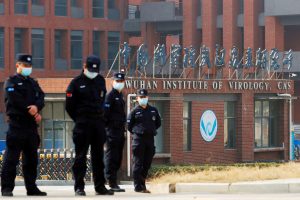COVID-19, which was unknown till a few months back, is a global crisis now. The disease has spread to almost all countries of the world infecting 9,825,539, and taking a toll of 495,388 lives, as reported on June 28. India has so far reported over 5 lakh cases and 16,095 people have succumbed to the virus.
So what is COVID-19, where did it start, what are the symptoms and the cure.
Here’s an exhaustive account of the pandemic and its implications:
What is coronavirus?
Coronavirus is an umbrella name for a family of viruses named after the crown-like effect created by spikes on their surface. They are proteins that help in attacking human cells.
What is COVID-19?
COVID-19 is the illness caused by coronavirus. It was first reported in China’s Wuhan province late 2019.
How contagious is COVID-19?
It is very infectious with each patient likely to infect 2 to 3 people, who in turn will each infect as many more. This makes it mores contagious than the seasonal flu and explains the wide spread of the disease with millions affected the world over.
How does it spread?
The World Health Organisation says that it spreads mainly through respiratory droplets when infected people sneeze or cough. These droplets may land on surfaces that healthy people may touch and get infected. However, a recent MIT study warned that that the virus may linger in the air for hours. But, a WHO reports says, “In an analysis of 75,465 COVID-19 cases in China, airborne transmission was not reported.”
What are the symptoms?
The symptoms that appear 14 days after a patient is infected include fever, dry cough, sore throat and shortness of breath. Some patients have also reported loss of smell and taste. A patient can transmit the disease even before showing symptoms.
What are the precautions?
There is currently no vaccine to cure the disease. However, following precautions help in limiting its spread:
- One fool proof precaution is social distancing. Maintaining 1 meter distance from other people is recommended. Self isolation is important.
- If you must step out, avoid shaking hands with others and do not touch surfaces such as hand railings, lift buttons etc. Do not touch your face, eyes, mouth etc.
- Wash hands frequently with soap and water, or with a handrub.
- Sneeze into your elbow or tissue and dispose of quickly and safely.
- Senior citizen, with underlying health conditions such as diabetes and heart disease, need to be doubly careful.
How to wear a mask?
A good mask is one that fits tightly around the nose, mouth and chin. Don’t touch the outer surface while wearing it and wash your hands with soap after taking it off. Disposable masks need to be changed every six hours.







